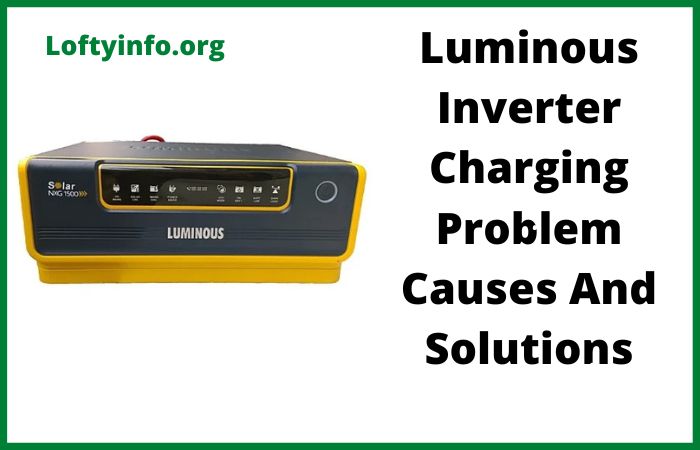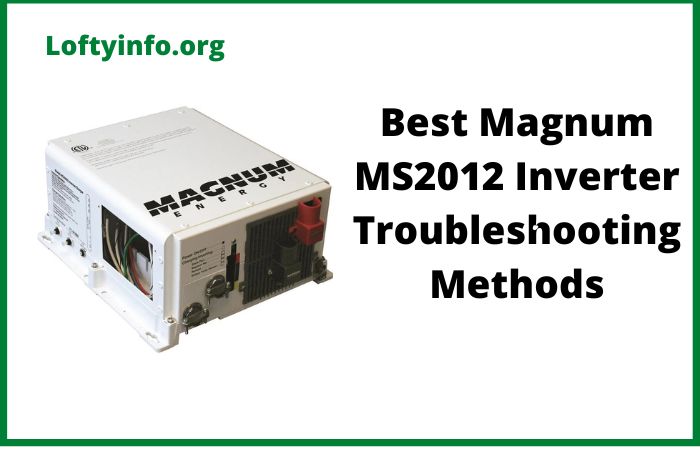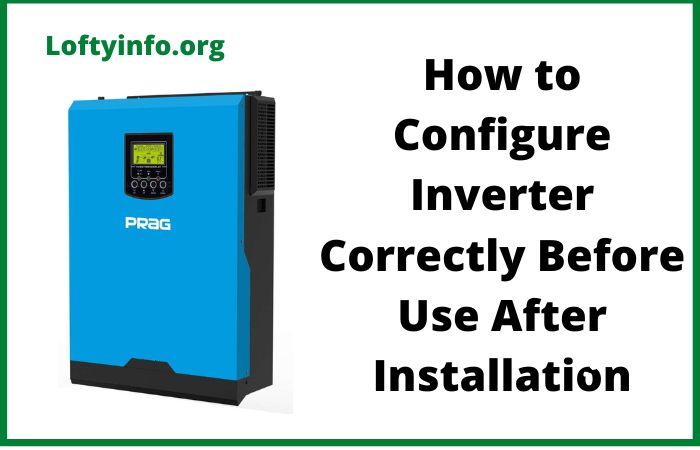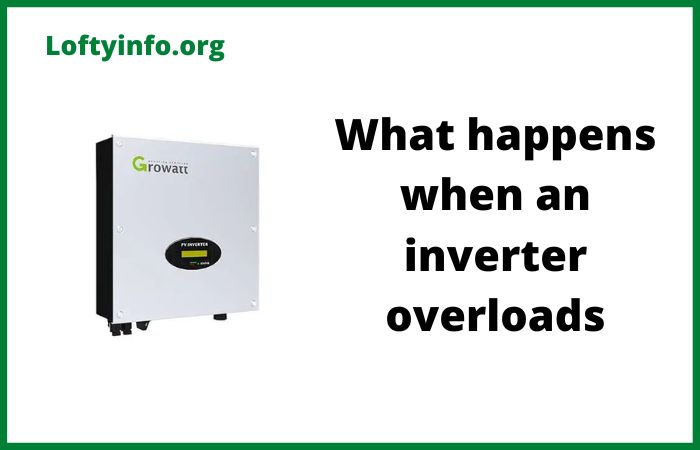Luminous Inverter Charging Problem: Causes And Solutions
Power backup systems have become essential in our daily lives especially in areas experiencing frequent electricity disruptions.
Luminous inverters stand among the most trusted brands for home and commercial power backup solutions.
Like any electronic device, these inverters can occasionally face charging issues that prevent them from storing power effectively.
When your inverter fails to charge properly, it defeats its primary purpose of providing uninterrupted power during outages.
Understanding the root causes of these charging problems and knowing how to address them can save you time, money and the frustration of being left without backup power when you need it most.
Why Proper Inverter Charging Matters
Before diving into specific problems, it’s important to understand that an inverter’s ability to charge its battery correctly determines its overall performance.
A fully charged battery ensures you have adequate backup time during power cuts while charging issues can lead to reduced backup time, frequent battery replacements or complete system failure.
The good news is that most Luminous inverter charging problem causes and solutions are straightforward once you identify the underlying issue.
Causes Of Luminous Inverter Charging Problem
1) Faulty or Loose Battery Connections
One of the most common yet overlooked causes of charging problems involves the battery connections themselves.
Over time, the terminals connecting your inverter to the battery can become loose, corroded or oxidized.
Corrosion appears as a white, green or blue powdery substance around the battery terminals, which acts as an insulator and prevents proper current flow.
Loose connections create resistance in the circuit, reducing the charging efficiency and sometimes preventing charging altogether.
How to troubleshoot: Start by switching off your inverter and disconnecting the mains supply for safety.
Carefully inspect both battery terminals for any signs of corrosion or loose connections.
If you notice corrosion, prepare a mixture of baking soda and water (approximately one tablespoon of baking soda to one cup of water).
Use an old toothbrush to gently scrub away the corrosion from the terminals and cable connectors.
After cleaning, dry the terminals completely with a clean cloth.
Check that all connections are tight and secure, but be careful not to overtighten as this can damage the terminals.
Apply a thin layer of petroleum jelly or terminal grease to prevent future corrosion.
Reconnect everything properly, ensuring positive connects to positive and negative to negative, then power on your system.
2) Battery Water Level Depletion
For conventional lead-acid batteries commonly used with Luminous inverters, the electrolyte water level plays a crucial role in charging efficiency.
During normal operation, batteries lose water through evaporation and the chemical reactions occurring inside.
When water levels drop below the recommended minimum, the battery plates become exposed to air, causing permanent damage and severely affecting charging capacity.
Low water levels increase internal resistance, generate excessive heat during charging and can ultimately lead to battery failure.
How to troubleshoot: Carefully open the battery caps (usually there are 3-6 caps depending on your battery model) and inspect the water level inside each cell.
You should be able to see the lead plates submerged in the electrolyte solution.
If the plates are visible or the water level is below the indicator mark, you need to add distilled water immediately.
Use only distilled water, never use tap water, as minerals and impurities in regular water will damage your battery.
Fill each cell slowly until the water level reaches just above the plates or to the maximum level indicator marked inside.
Don’t overfill, as the electrolyte may overflow during charging. Replace the caps securely and wipe away any spills.
Check water levels monthly, more frequently during hot weather or if you use your backup frequently.
3) Defective Battery
Batteries have a finite lifespan, typically ranging from 2-5 years depending on usage patterns, maintenance and environmental conditions.
As batteries age, their internal components deteriorate, reducing their ability to accept and hold a charge.
A defective or aged battery may show symptoms like swelling, leaking, extremely low backup time despite full charging indication, or failure to charge at all.
Sometimes, internal short circuits or sulfation (hardening of lead sulfate crystals on the plates) can occur even in relatively new batteries due to manufacturing defects or improper usage.
How to troubleshoot: First, check the manufacturing date on your battery, if it’s older than 3-4 years and showing charging issues, replacement might be the most practical solution.
Inverter showing low battery but not charging
To test the battery’s condition, use a multimeter to measure the voltage.
A fully charged 12V battery should read around 12.6-12.8V when disconnected from the inverter.
If it reads significantly lower (below 11.5V) after a full charging cycle, this indicates battery deterioration.
Perform a load test by running some appliances on battery backup and observing how quickly the voltage drops.
A healthy battery should maintain stable voltage under load for a reasonable duration.
Look for physical signs of damage, bulging sides, cracks or leaking acid are clear indicators of battery failure.
If testing confirms battery defects, replacement is necessary.
Ensure you purchase a battery with the correct capacity (Ah rating) recommended for your Luminous inverter model.
4) Malfunctioning Inverter Charging Circuit
The charging circuit inside your inverter is responsible for converting AC mains supply into appropriate DC voltage for charging the battery.
This circuit includes components like transformers, rectifiers, charging controllers, and various protection circuits.
When any of these components fail, your inverter may not charge the battery properly or at all.
Common indicators include the inverter showing charging status when it’s not actually charging, unusual sounds from the inverter, excessive heating or error codes displayed on the panel.
How to troubleshoot: Check your inverter’s display panel for any error codes or warning indicators.
Consult your user manual to understand what these codes mean, Luminous inverters typically have detailed diagnostic features.
Listen for any unusual buzzing, humming or clicking sounds from the inverter, which could indicate transformer or relay problems.
Feel the inverter body carefully, as it may be hot.
Excessive heat often indicates component failure or overload.
Measure the output voltage from the inverter to the battery using a multimeter during charging mode; it should typically be around 13.8-14.4V for a 12V battery.
If the voltage is significantly different, the charging circuit may be faulty.
For internal circuit problems, professional repair is usually necessary as these require technical expertise and may involve replacing specific electronic components.
Contact Luminous service center or an authorized technician for proper diagnosis and repair.
5) Tripped or Faulty MCB/Fuse
The Miniature Circuit Breaker (MCB) or fuse in your inverter circuit serves as a safety device, cutting power when it detects overload, short circuit or other electrical faults.
When these protective devices trip or blow, the inverter cannot receive mains power for charging, even though other functions might appear normal.
Sometimes, an MCB can develop internal faults that cause it to trip repeatedly without any actual electrical problem while a corroded or loose fuse holder can prevent proper power flow.
How to troubleshoot: First, check your home’s main distribution board for any tripped MCBs in the circuit supplying power to your inverter.
If you find a tripped MCB, don’t immediately reset it, try to identify why it tripped. Disconnect the inverter from mains, reset the MCB, and observe if it trips again.
If it doesn’t trip without the inverter connected, the problem likely lies within the inverter system.
Check the MCB or fuse specifically installed for your inverter (usually located near the inverter or in a separate protection box).
For MCBs, flip it to the off position and then back on. For fuse-based systems, carefully remove the fuse and inspect it visually, a blown fuse will have a broken metal wire inside or discoloration.
Replace blown fuses with the exact same rating recommended by the manufacturer.
If an MCB trips repeatedly even after resolving other issues, the MCB itself may be faulty and require replacement.
Always use the correct rating, installing a higher rating MCB to prevent tripping is dangerous and can cause fire hazards.
6) Incorrect Inverter Settings
Modern Luminous inverters come with various configurable settings that control charging parameters, battery type selection and charging modes.
Incorrect settings can prevent optimal charging or stop charging entirely.
For instance, if the battery type setting doesn’t match your actual battery (lead-acid vs. tubular vs. SMF), the charging voltage and current will be inappropriate.
If the charging mode is set incorrectly, it might undercharge or overcharge your battery.
How to troubleshoot: Refer to your Luminous inverter’s user manual for the correct settings based on your battery type and capacity.
Most Luminous inverters have a settings menu accessible through buttons or a display panel.
Navigate to the battery settings and verify that the battery type selected matches your actual battery.
Check the charging mode settings, typical modes include normal charging, quick charging and trickle charging.
For everyday use, normal charging mode is usually appropriate.
Verify the battery capacity settings match your battery’s Ah rating.
Some advanced models allow you to set charging voltage thresholds, ensure these are set to manufacturer recommendations.
If you’re unsure about any settings or suspect they’ve been changed accidentally, perform a factory reset (refer to your manual for the specific procedure).
After adjusting settings, monitor the charging process for a few hours to ensure the battery is charging properly.
The inverter display should show increasing battery voltage and appropriate charging indicators.
Preventing Future Charging Problems
While understanding Luminous inverter charging problem causes and solutions helps you address existing issues, prevention is always better than cure.
Establish a regular maintenance schedule that includes monthly battery water level checks, quarterly terminal cleaning and annual professional inspections.
Install your inverter in a well-ventilated area away from direct sunlight and excessive heat.
Avoid completely draining your battery regularly, as deep discharges reduce battery life.
Use appropriate surge protection on your mains supply to protect the inverter’s sensitive electronics.
Keep the inverter and battery area clean and free from dust and moisture.
When you notice any unusual behavior like strange sounds, smells or performance changes, address them immediately rather than waiting for complete failure.
Understanding these common charging issues empowers you to maintain your Luminous inverter system effectively.
While some problems require professional intervention, many can be resolved with basic troubleshooting, potentially saving you significant repair costs and ensuring uninterrupted power backup when you need it most.
Regular attention to your inverter’s charging health will extend both battery and inverter lifespan while providing reliable performance for years to come.
causes of luminous 950 inverter charging problems
Causes of inverter battery slow charging problem
Causes of true power inverter overload problems
Causes of luminous inverter low voltage problems
Causes of solax inverter problems
Bluetti ac200p problems and solutions
How to choose solar system type wisely
Factors to consider when choosing battery for your solar setup
Fixing luminous inverter auto cut problem
Why is luminous inverter fan not stopping
Common luminous inverter problems
Luminous inverter battery charging problem
Solutions to Common 3116 cat engine problems






